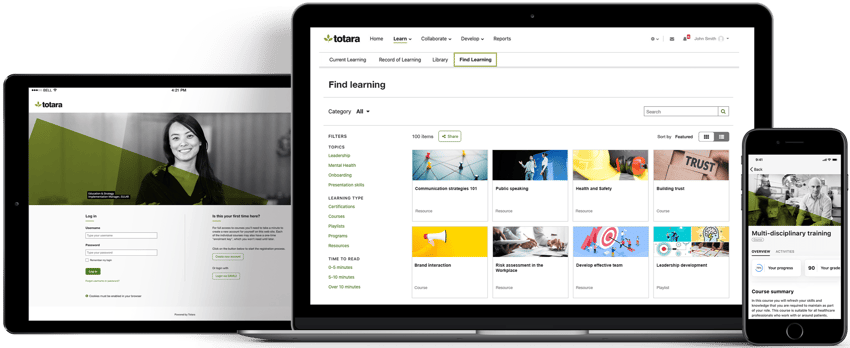Whether ‘tis nobler to opt for LMS configuration or face the sea of customisation troubles is up for debate, but here at Hubken we certainly think configuration is the smarter choice.
Apologies for getting all Shakespearean on you, but just as Hamlet contemplated whether ‘to be or not to be’, many organisations have faced the question of whether to configure or customise their Learning Management System.
As Hamlet can attest, those types of questions aren’t easy to answer, but this article will provide some help.
LMS Configuration and customisation – what’s the difference?
To understand why we recommend configuration over customisation, you first need to know the difference. Since we’re on the Shakespeare theme, let’s run with it.
Cast your mind back to 1599. Will is excited to get his plays in front of the adoring public and perhaps enshrine them into GCSE syllabuses for all eternity.
Naturally, he needs a new theatre. It is to be called ‘The Globe’ and he envisions a three-storey open-air amphitheatre of dreams.
We can imagine that he has two options – buy an existing theatre and configure it into the theatre he pictures or buy a barn and customise it to become ‘The Globe’ that London has always needed.
1. LMS Configuration
For Shakespeare, configuration means buying an existing theatre and redecorating, and perhaps moving a few walls around, to get it as close to what he envisions as possible.
The theatre he purchases might not have everything on his wish list – his budget might not have stretched to multiple royal boxes, for example – but he can get pretty close without having to tear the whole thing down and start again.
LMS configuration echoes that sentiment.

A good system will be able to meet the vast majority of your needs, though without customisation it may not meet all of them.
Configuration just means tweaking the core LMS, which for us means either a Totara Learn or Moodle, so it can do most of the things you want it to do.
2. LMS Customisation
If Will decides to go down the barn conversion route however, things become a little more complicated. The customisation involved in turning a barn into a theatre is complex and things can go south very quickly.
Perhaps there’s a site of archaeological interest below the foundations, which delays the project. He might discover that the barn is grade II listed and those royal boxes he wants to put in the rafters aren’t going to be a reality anymore.
Maybe his project manager goes on a nice holiday to Stratford and Will’s left holding up some termite-ravaged beams for two weeks, when all he wants to do is write about shrews. You get the picture.
Customisation is complicated and it’s no different when it comes to an LMS, which usually requires custom coding more complicated than a Shakespearean soliloquy.

Get it right and your system can meet every single one of your long list of requirements, but even then there are long-term issues.
Get it wrong and you’re looking at an expensive and complicated mess.
The drawbacks of LMS customisation
Let’s step away from the Bard’s real estate ventures and examine exactly why LMS customisation can cause so many issues.
The simple reality is that using a configured out-the-box solution allows a level of flexibility that customised systems can’t match.
Some of the key reasons for that include:
-
Customisation makes system maintenance and upgrades more difficult
-
Custom coding often needs reviewing and testing before the system can be upgraded
-
Regular updates make keeping a customised system up to date can be expensive
-
You are fully dependent on whoever customised the system for you – moving supplier or trying to go solo can be very difficult, time-consuming and expensive
-
If you need to move in the future, some suppliers are reluctant to take on clients with existing, heavily customised systems
-
If you need to change your system or introduce new features or functionality it can be difficult and sometimes impossible if the code has been altered
With so many potential pitfalls, opting to go down the customisation route requires a long-term commitment to the use of the customised LMS in order to experience any sort of cost-effectiveness.
Sadly, there’s also the potential for being taken advantage of by some suppliers in the industry. Offering unnecessary customisations and long-term maintenance and update fees is one way that some businesses can generate extra income, all at the expense of the client’s best interests.
At Hubken we a strong believers in LMS configuration over customisation as it allows you to remain flexible and up-to-date easily and quickly with a cost-effective solution.
The final case for LMS configuration
The key to the success of Hubken’s LMS solutions, which focus principally on configuration over customisation, is their open-source nature.
Our LMS solutions are built using either Moodle or Totara Learn, both of which are open-source LMS platforms. This means they are incredibly flexible and can be moulded to suit the needs of any organisation.

The open-source communities for these platforms are constantly coming up with innovative new features that allow Moodle and Totara Learn LMS to adapt to even the most complex requirements.
So, configuration can get Will the Globe Theatre he needs to make sure some people might remember him 400 years later, and it can get you the LMS system your organisation needs.
Looking to implement an LMS for your organisation? Get in touch with Hubken today!

Explore HubkenCore – our unique SaaS LMS offering
Ready to see how our new LMS bundled solution is revolutionising how you purchase an e-learning solution?





